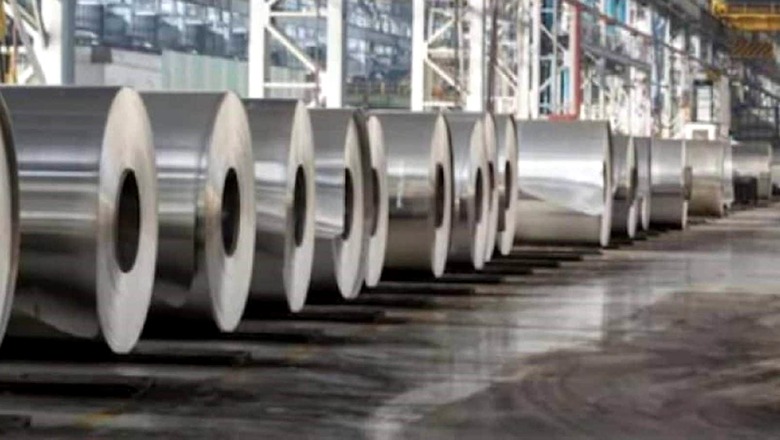
views
The steel industry has been one of the major contributors to India’s growth primarily in infrastructure development. While the government is focusing to achieve a $5-trillion economy by the financial year 2024-25, the steel industry’s fortunes look optimistic in the face of the recent instability caused due to the COVID-19 pandemic.
The Indian steel industry accounts for about 2 per cent of the GDP, while its diverse application across sectors makes it a harbinger of economic activity. As per the National Steel Policy 2017, the Indian steel industry employs over 5 lakh people directly and close to 20 lakh indirect employment.
Infrastructure – The Push Factor
The country is currently witnessing a transition towards an economic stronghold stimulated by the national infrastructure pipeline comprising key initiatives like ‘housing for all’, smart cities, ‘Bharatmala’, ‘Sagarmala’, ‘Udaan’ (airports), freight corridors, high-speed rail and metro rail, among others. These factors indicated a strong demand for steel at a compound annual growth rate (CAGR) of 7 per cent to 7.5 per cent from the current fiscal till 2025. The share of building and infrastructure construction alone in overall steel consumption is currently pegged at 60 per cent to 65 per cent.
PLI Scheme Has Huge Investment Potential
In sync with the ‘Make in India’ policy to boost domestic manufacturing, the PLI scheme for manufacturing high-grade specialty steel will further provide impetus and benefit both major integrated steel manufacturers as well as downstream manufacturing MSMEs in the sector. This will bring India at par with advanced steel-making nations like South Korea and Japan and help plug the gap in market demand by domestic sourcing while creating products for exports. The PLI scheme has huge potential to attract further investment in the steel sector.
Inclusion of Steel in RoDTEP
Currently, steel is outside the purview of ‘The Remission of Duties and Taxes on Export Products (RoDTEP)’ scheme that offers refunds against various embedded taxes to exporters across sectors such as automobiles and agricultural products. Recently India’s trade ministry has pursued to extend an export promotion scheme to reimburse some local levies for domestic steel producers, which is a welcome step for the industry.
To increase the competitiveness in the Indian steel industry, it will be important to focus on cost reduction across the supply chain, efficiency in logistics and reduction in financing cost. Digitisation, along with a strong emphasis on sustainability, will further provide value addition for the entire steel ecosystem. Every stakeholder’s interest needs be addressed with the focus towards higher productivity, higher quality, lower costs, and better plant health.
Budget 2023 – Industry Expectations
The industry expects for removal of the export duty levied earlier this year. The Russia-Ukraine conflict has opened the doors in the European market for Indian steelmakers, but the imposition of the export duty is a deterrent factor. A revision of the export duty during the Budget 2023 will help the industry tide away the inflationary pressure. This will be a welcome move for the industry as a whole for the reason that the industry players can tap the huge export potential.
Almost 90 per cent of the demand for steel mill rolls in India is met through imports with a 7.5 per cent customs duty being currently levied. This increases the cost of steel production also and affects the competitiveness in the international markets.
Assocham in its ‘Pre Budget Memorandum’ has recommended for full exemption of custom duty on steel mill rolls. If this is granted, it will benefit the industry immensely. Also, a zero import duty on stainless steel scrap will go a long way in reducing the carbon footprint. The rationalisation of import duty on stainless steel flat products will be a step in the right direction towards ‘Atmanirbhar Bharat’ in stainless steel.
(The author is the chairman and managing director of Kamdhenu Ltd)
Read all the Latest Business News here



















Comments
0 comment